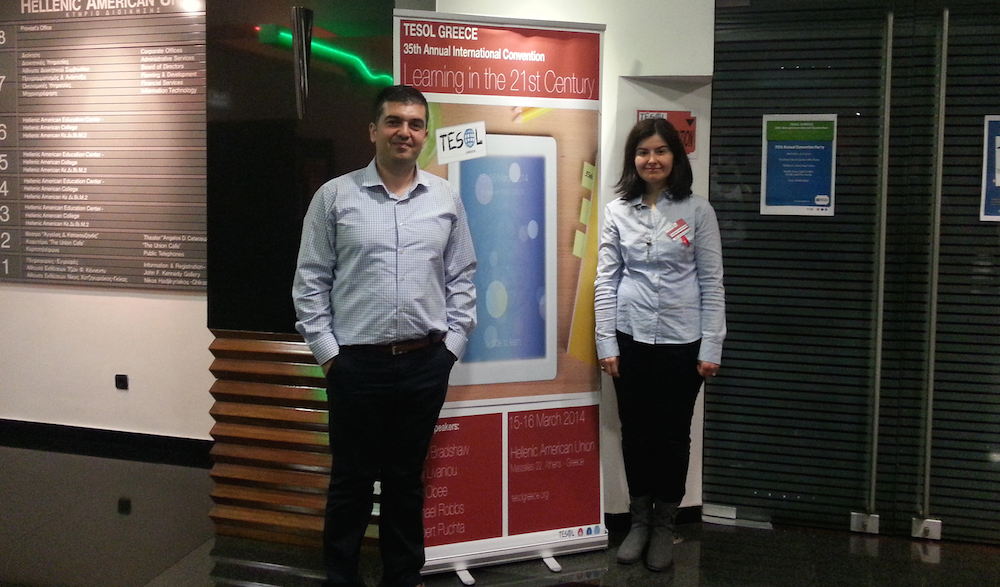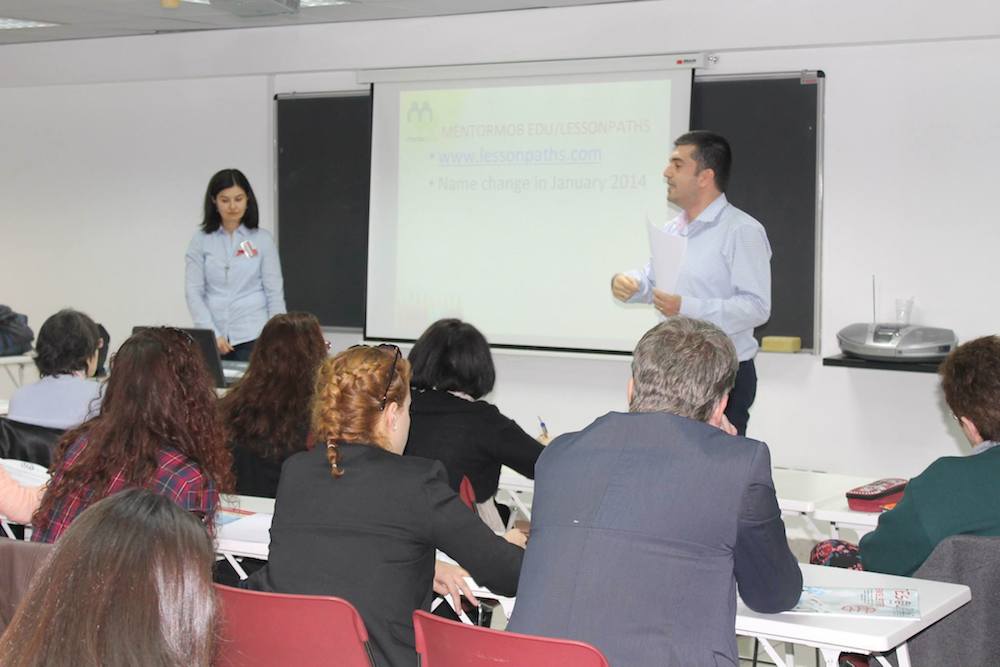
TESOL Greece the 35th Annual International Convention, 2014
Review by Neslihan Demirdirek & B. Sonat Demirdirek
This year, TESOL Greece had its 35th Annual International Convention in Athens from the 15th -16th of March, with many English language teachers coming from all over the world. The conference theme was ‘Learning in the 21st century’. Therefore, we gave a presentation entitled ‘Cutting Edge Web Tools for the 21st Century EFL Class’. In this session, we shared how LessonPaths, Scrible and Videnotes, which are extremely useful web tools, can be used in an academic context.
The first tool, LessonPaths (www.lessonpaths.com ) allows teachers to prepare a playlist with websites, documents, videos and quizzes. These playlists are similar to web quests. That means instead of sending a list of websites to students, by sharing a web link, you can share a playlist including videos, quizzes and online articles.
The second one is Scrible (www.scrible.com ) which enables educators to mark up web pages and share them online. You can highlight different parts of the text and add notes on the text online as well as save these in your library. The best thing about Scrible is being able to reach these web pages easily in your library even if the original website is not available anymore. This tool can be used to help students to read online articles by adding explanations and guiding questions or sharing vocabulary, grammar or reading comprehension tasks on the web page.
The third tool, Videonotes (www.videonot.es ) allows you to watch a video such as a YouTube video and take notes on the same screen. These notes are saved in Google drive and can be shared easily. The notes are synchronized with the video so with longer videos; your notes will take you to the section of the video where you typed the notes. This tool helps teachers to save valuable lesson preparation time.
We attended many presentations which helped us in many different ways. One of them was the plenary session by Michael Robbs which was called ‘Art in the classroom’. He started by saying ‘A picture is worth a thousand words’ and therefore pictures should be an important part of language classrooms. In the first part of the session, he showed us the basics of drawing, which was enjoyable. In the second and third part, he explored how comics and works of art can be used in English language lessons. It was an extremely inspiring session and helped us see how drawing, comics and works of art can change the atmosphere in class and draw students’ attention.
Another plenary session was by Herbert Puchta entitled ‘Emotional Engagement for adult learners’. In his talk, he shared recent findings in cognitive sciences which indicate that the brain is ‘an organ of emotion’. He discussed how increasing emotional engagement in the learning process can give learners a greater sense of control and leads to greater success. He underlined the fact that having the pleasure of understanding helps learners to become more involved. He shared Mihaly Csikszentmihalyi’s flow theory and McQuillan & Conde’s research on what kind of texts support flow research. In addition, he concluded that lighter texts and humour can help to create flow in the language classroom. Another interesting point he mentioned was creating an ‘error-welcoming engagement’ rather than ‘error-free learning’ and also ‘minds-on experimentation’ rather than ‘instruction-led pedagogy’. The advice to increase emotional engagement was to forget the idea that we have to ‘teach the language’ but instead, try to make students ‘enjoy the language’ by including more cultural aspects such as music, films and people’s lives in our lessons.
Another interesting session was given by Christine Niakaris and Jenny Zimianitou from Hellenic American University in Athens. This session was called ‘Integrating Modern Technology in the Traditional Framework for Teaching L2 Reading Comprehension’. They started their talk by sharing the traditional framework for teaching reading comprehension which is pre-reading, while-reading and post-reading stages. According to their research, in most of the general English course books, there is more emphasis on pre- and post-reading activities but little guidance for while-reading. They tried to answer the question ‘By using modern technology, can the current framework be enhanced?’ They shared some ideas which can be used on smart boards or on PowerPoint such as word cloud, glossing, underlining to show main ideas and drawing arrows to show references. They showed examples of these ideas and how they go through texts together with learners to guide them better in these three stages.
TESOL Greece Conference was an invaluable opportunity to attend many sessions on different topics and we came back home with new ideas to implement in our class.

